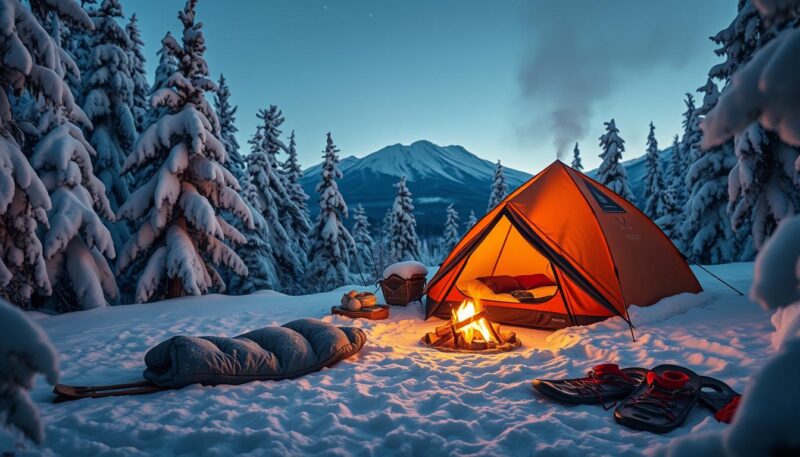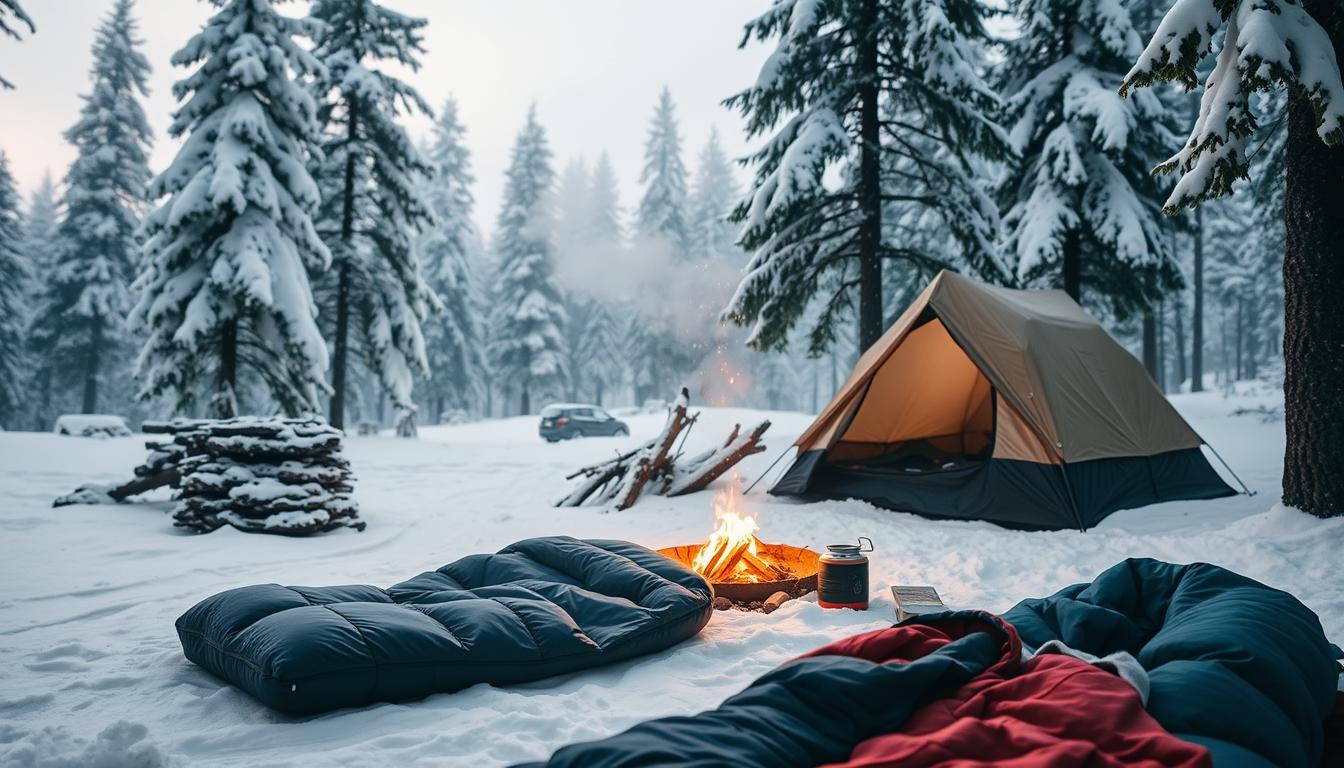Winter camping offers a unique and serene experience, transforming ordinary landscapes into magical realms of white. Picture towering trees heavy with snow, the quiet crunch of your boots on frosty ground, and the soft glow of a campfire warming up a cozy evening. However, camping in the snow poses its own set of challenges, particularly for first-timers. Proper preparation is not only recommended but essential to ensure your safety and enjoyment while experiencing the enchanting winter outdoors.
Before you embark on this adventure, it’s crucial to stay informed about the weather conditions. Understanding the forecast helps you select the right gear for your trip. For those venturing out for the first time, sticking to well-traveled routes is advisable, as it minimizes risks. Drawing on insights from resources like Kevin Callan’s Complete Guide to Winter Camping can also provide you with valuable tips for snow camping. Whether it’s investing in adequate clothing, selecting a suitable camping spot, or learning how to keep warm, having the right knowledge can make your winter getaway an invigorating experience. So, gear up and get ready to explore the stunning beauty of winter landscapes while staying safe and comfortable!
Preparing for Camping in the Snow
Embarking on an adventure in the snow requires thorough preparation to ensure safety and comfort. The first step in preparing for snow camping is understanding weather conditions. Winter forecasts can provide critical insights into temperature fluctuations, snowfall, and potential storms. This knowledge will influence your choice of snow camping gear and techniques you’ll employ during your stay.
Understanding Weather Conditions
Being informed about the weather can significantly enhance your winter camping experience. Pay attention to forecasts and consider factors such as potential temperature drops and snowfall rates. Knowing these elements helps in making smarter decisions regarding your snow camping essentials.
Essential Winter Gear for Comfort and Safety
Your choice of snow camping gear can mean the difference between a comfortable night and a frigid experience. Opt for well-insulated sleeping bags suited to winter temperatures. Choose a bag rated 10-20ºF lower than the expected lows for your trip. For optimal insulation, consider women’s sleeping bags, which typically provide more warmth. Utilize a sleeping pad with an R-value of 5 or higher to prevent heat loss to the cold ground. Select a tent with steep sides to shed snow effectively, thus reducing the risk of collapse under heavy snow accumulation.
Ten Essentials for Winter Camping
To ensure you are well-prepped for your snow camping journey, consider this list of ten essentials:
| Item | Description | Importance |
|---|---|---|
| Navigation Aids | Map, compass or GPS unit | To avoid getting lost |
| Sun Protection | Sunscreen and sunglasses | To protect against UV rays and glare |
| Insulation | High-quality sleeping bag | To maintain body heat |
| Illumination | Headlamp or flashlight | To navigate in low light |
| First-Aid Kit | Basic medical supplies | To address minor injuries |
| Fire Starting Tools | Lighter, matches or fire starters | For warmth and cooking |
| Repair Kit | Essential tools and repair materials | To fix gear in the field |
| Nutrition | High-energy food options | To maintain energy levels |
| Hydration | Insulated water bottles | To prevent freezing |
| Sturdy Shelter | 4-season tent | To ensure protection from the elements |
This list serves as a solid foundation for preparing for snow camping, ensuring you have all the snow camping essentials to enjoy a memorable winter adventure.
Staying Warm and Comfortable While Camping in the Snow
Venturing into the snowy wilderness can be refreshing yet challenging. Understanding how to stay warm camping in the snow is essential for a successful trip. Effective layering of clothing plays a significant role in maintaining warmth, particularly as temperatures drop. Additional strategies for managing moisture and carefully selecting your campsite can dramatically enhance your cold weather camping experience.
Layering Your Clothing Effectively
Proper clothing layers are vital for staying warm during snow camping. Begin with a breathable base layer, preferably made from moisture-wicking materials such as merino wool or polyester. This layer helps manage perspiration, keeping you dry while camping. The mid-layer should provide insulation, trapping heat without causing overheating. A weather-resistant outer layer shields you from wind and snow, preventing heat loss and allowing your body to maintain warmth.
Tips for Managing Moisture
Staying dry while camping ensures you retain body heat. Wet clothing can sap warmth quickly. Choose waterproof boots and gaiters to keep your feet dry. Be cautious about sweating; damp clothing can lead to significant cooling effects. To reduce this risk, manage your activity levels for optimal warmth. Keeping your sleeping gear dry is equally important, as condensation in sleeping bags can greatly diminish insulation. Utilize dry bags and airflow to help reduce moisture buildup.
Choosing the Right Campsite
Your campsite selection can greatly influence warmth and comfort. Seek locations sheltered from strong winds, such as areas with natural barriers like trees or hills. Avoid camping in cold-air troughs where frigid air settles. When setting up snow camping shelters, compress the loose snow to create a solid foundation. Packed snow retains heat better, increasing your comfort during the night. Regularly check your tent rigging in windy conditions to ensure structural integrity, enhancing your overall experience in the snow.

Conclusion
Winter camping can be an exhilarating adventure, bringing its own set of challenges like camping in freezing temperatures and the necessity for winter survival camping skills. However, with proper preparation and knowledge, you can turn your trip into a fulfilling experience. Understanding the weather conditions and selecting suitable gear is paramount in ensuring your comfort and safety while enjoying the beauty of snow-covered landscapes.
As you venture into the cold, remember the importance of effective layering and managing moisture to maintain warmth. The right campsite can also greatly enhance your experience, allowing you to fully embrace the charm of winter’s tranquility. Don’t let the perceived difficulties deter you; many families and outdoor enthusiasts find joy in winter camping each year, relishing the chance to connect with nature and create lasting memories.
Ultimately, snow camping tips, from choosing insulated sleeping gear to having hot meals ready, can significantly improve your outings. So bundle up, gather your essential gear, and prepare to explore the wonders of winter camping—it’s an adventure that promises not only memorable moments but also a unique connection with the great outdoors during the colder months.

